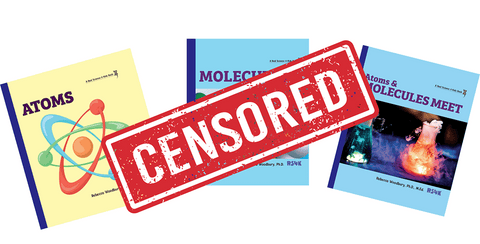When we think about chemistry education, images of high school laboratories and complex molecular models might come to mind. However, the foundation for understanding these concepts starts much earlier—in elementary school. Unfortunately, traditional teaching methods and outdated learning progressions have left young students with a limited understanding of chemistry, focusing primarily on the macroscopic properties of matter. This approach overlooks the potential for children to grasp the fascinating world of atoms and molecules, which are the building blocks of everything around us.
The Current State of Elementary Chemistry Education
The Next Generation Science Standards (NGSS) have made strides in updating science education, but they still fall short when it comes to introducing elementary students to the micro-level world of chemistry. Current curricula and textbooks largely restrict their scope to observable properties such as states of matter, density, and physical changes. This macroscopic focus stems from an outdated belief that young children are not capable of understanding abstract concepts like atoms and molecules.
Challenging the Status Quo: The Work of Haussler and Samarapungavan
Recent research by Carol Haussler and Samarapungavan offers an alternative perspective. Their studies suggest that not only are elementary students capable of learning about atoms and molecules, but doing so also enhances their overall understanding of chemistry. In their papers, Haussler and Samarapungavan propose a revised learning progression that introduces these fundamental concepts at an earlier age, fostering a deeper and more cohesive understanding of science as students progress through their education.
Carol Haussler's Perspective
Haussler’s research illustrates that young learners can grasp the basics of atomic theory and molecular structures when these concepts are presented in an age-appropriate manner. By using models, visual aids, and interactive activities, educators can demystify these abstract ideas and make them accessible to children. Haussler's findings indicate that this early exposure not only builds a solid foundation for future learning but also sparks curiosity and enthusiasm for science.
Insights from Samarapungavan
Samarapungavan’s studies further support the notion that elementary students are ready and able to learn about the microscopic aspects of chemistry. Through carefully designed curricula that integrate atomic and molecular concepts with hands-on experiments, Samarapungavan demonstrates that students develop a more robust understanding of matter and its properties. This approach aligns with cognitive development theories, which suggest that children are natural scientists, eager to explore and understand the world around them.
The Benefits of an Updated Learning Progression
- Implementing a learning progression that includes atoms and molecules at the elementary level offers numerous benefits:
- Enhanced Understanding: Introducing atomic theory early helps students understand the underlying principles of chemistry, leading to a more integrated knowledge base as they advance in their studies.
- Increased Engagement: Engaging students with the fascinating world of atoms and molecules can ignite a passion for science, encouraging them to pursue STEM subjects in higher education.
- Critical Thinking: Learning about the microscopic components of matter fosters critical thinking and problem-solving skills, as students must visualize and conceptualize abstract ideas.
Moving Forward
To align elementary chemistry education with modern scientific understanding, it is essential to revise the current learning progressions. By incorporating the research and recommendations of experts like Haussler and Samarapungavan, educators can provide a more comprehensive and stimulating science education that prepares students for future academic success.
Updating elementary chemistry curricula to include atoms and molecules is not just beneficial but necessary. It breaks down long-standing misconceptions about young learners' capabilities and paves the way for a new generation of scientifically literate individuals.
References
Haeusler, C., & Donovan, J. (2017). Challenging the science curriculum paradigm: Teaching primary children atomic-molecular theory. Research in Science Education, 50(1), 23–52. https://doi.org/10.1007/s11165-017-9679-2
Samarapungavan, A., Bryan, L. A., Staudt, C., Sapkota, B., Will Pinto, H. E., Broadhead, J. M., & Kimball, N. (2022). Using Technology‐mediated inquiry to help young learners reimagine the visible world through simple particle models. Journal of Research in Science Teaching, 60(2), 390–422. https://doi.org/10.1002/tea.21802





Comments (0)
There are no comments for this article. Be the first one to leave a message!